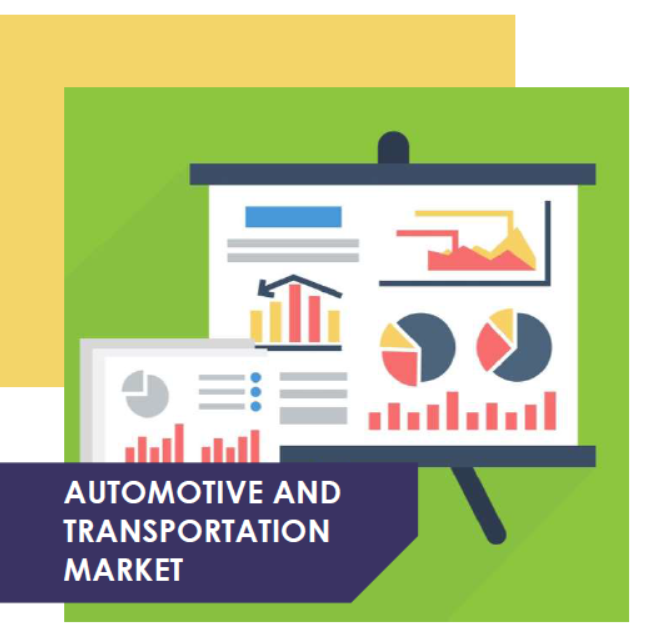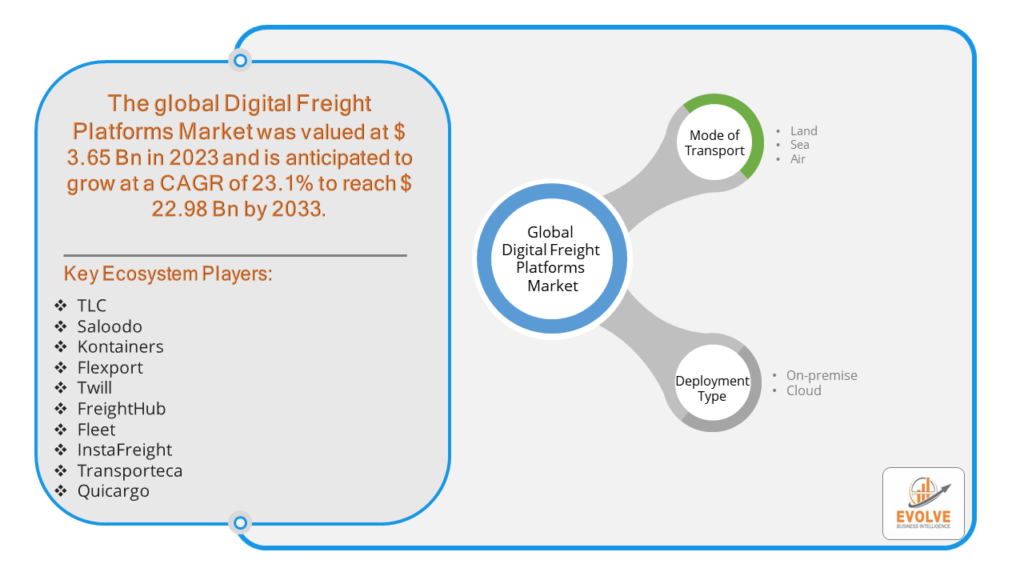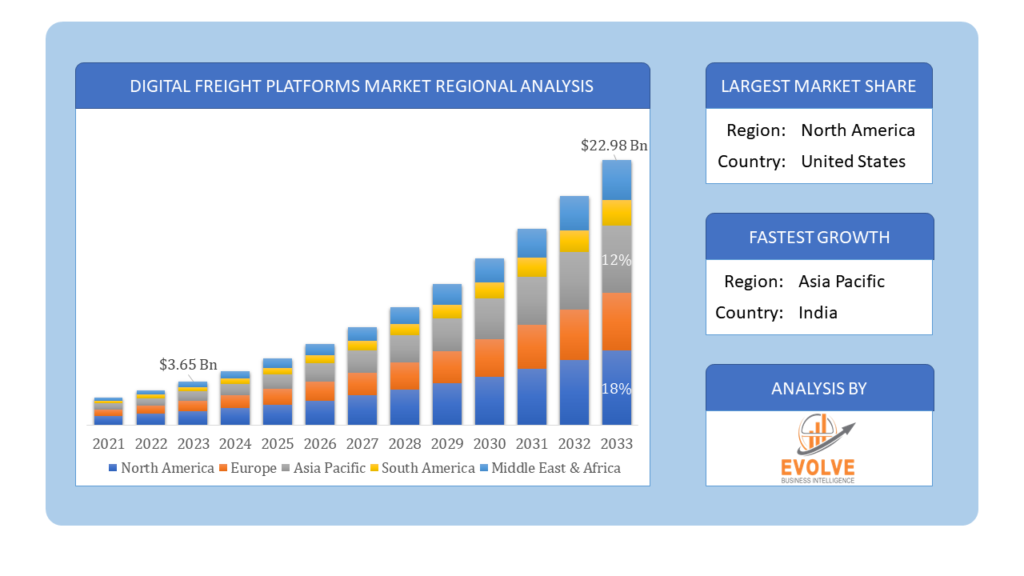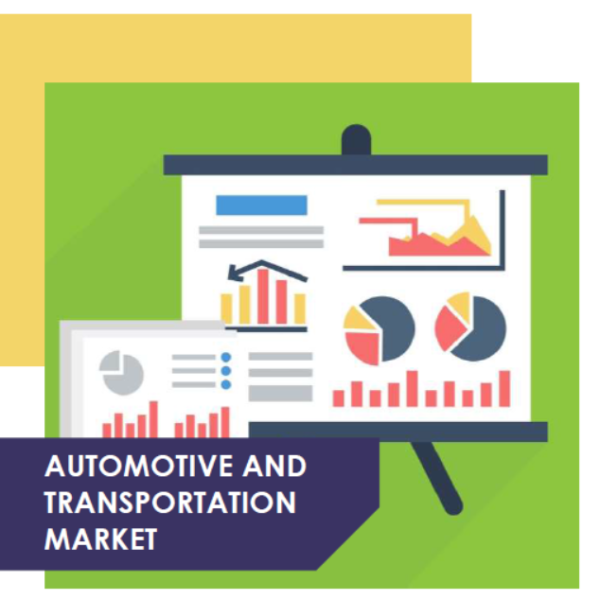Digital Freight Platforms Market Overview
The Digital Freight Platforms Market Size is expected to reach USD 22.98 Billion by 2033. The Digital Freight Platforms Market industry size accounted for USD 3.65 Billion in 2023 and is expected to expand at a compound annual growth rate (CAGR) of 23.1% from 2023 to 2033. The Digital Freight Platforms Market refers to the industry segment focused on online platforms that facilitate the booking, tracking, and management of freight transportation services. These platforms use digital technologies to connect shippers and carriers, streamlining the logistics process by providing real-time information, optimizing routes, and improving efficiency.
These platforms are used by various stakeholders in the logistics and transportation industry, including freight brokers, carriers, shippers, and third-party logistics providers. The market is driven by the increasing demand for efficiency, cost reduction, and transparency in freight operations.
Global Digital Freight Platforms Market Synopsis
The COVID-19 pandemic had a significant impact on the Digital Freight Platforms Market. With social distancing and lockdown measures, there was a surge in demand for contactless and digital solutions. Traditional freight booking and management processes faced disruptions, pushing more companies to adopt digital freight platforms. The pandemic accelerated the growth of e-commerce, increasing the demand for efficient logistics and freight services to handle the surge in online orders. This boosted the need for digital platforms that could manage high volumes of shipments. Initial lockdowns and restrictions led to significant supply chain disruptions, affecting freight movements globally. Digital platforms played a crucial role in managing these disruptions by providing real-time visibility and alternative routing options. The pandemic spurred innovation in digital freight technologies, leading to the development of more advanced features such as AI-driven route optimization, predictive analytics, and enhanced real-time tracking capabilities.
Digital Freight Platforms Market Dynamics
The major factors that have impacted the growth of Digital Freight Platforms Market are as follows:
Drivers:
Ø E-commerce Growth and Real-Time Visibility
The rapid growth of e-commerce has significantly increased the volume of goods that need to be transported, driving demand for efficient and scalable logistics solutions. Consumers expect faster and more reliable delivery services, pushing businesses to adopt digital platforms to meet these demands. Digital platforms provide real-time tracking and monitoring of shipments, enhancing transparency and allowing for proactive management of delays or issues. Access to real-time data enables shippers and carriers to make informed decisions, improving overall logistics performance. The integration of artificial intelligence and machine learning technologies enables predictive analytics, demand forecasting, and dynamic pricing, enhancing the functionality of digital freight platforms. The Internet of Things (IoT) allows for better asset tracking and condition monitoring, providing valuable data to improve logistics operations.
Restraint:
- Perception of Technological Challenges
Integrating digital freight platforms with existing legacy systems can be complex and costly, leading to resistance from companies with established infrastructure. Concerns about data privacy and security can deter companies from adopting digital platforms, especially when sensitive shipment information is involved. The lack of skilled personnel to manage and operate advanced digital freight platforms can be a barrier, particularly for smaller companies. The logistics industry is highly fragmented with varying standards and practices, making it challenging to implement a universal digital solution that meets all needs.
Opportunity:
⮚ Growing demand for Supply Chain Visibility
Increasing demand for real-time visibility into shipments and inventory management drives the adoption of digital platforms that offer enhanced tracking and monitoring capabilities. Blockchain technology can improve supply chain transparency and traceability, offering new opportunities for digital freight platforms to innovate. Digital freight platforms offer rich data analytics capabilities that enable businesses to make informed decisions, improve efficiency, and identify new market opportunities. Predictive analytics can anticipate market demand and optimize inventory management and transportation planning. The rise of urbanization and the demand for efficient last-mile delivery solutions present opportunities for digital freight platforms to innovate in urban logistics.
Digital Freight Platforms Market Segment Overview
By Mode of Transport
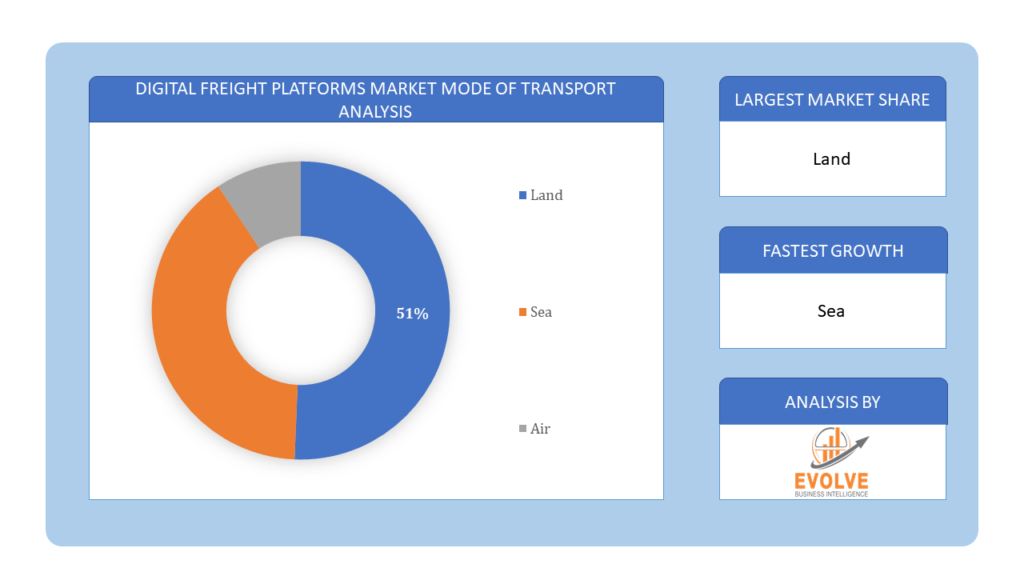 Based on Mode of Transport, the market is segmented based on Land, Sea and Air. The Land segment dominant the market. They focus on land-based transportation, primarily road freight. These platforms utilize technology to optimize the process of matching freight shipments with available carriers, enhancing efficiency, transparency, and cost-effectiveness in logistics operations.
Based on Mode of Transport, the market is segmented based on Land, Sea and Air. The Land segment dominant the market. They focus on land-based transportation, primarily road freight. These platforms utilize technology to optimize the process of matching freight shipments with available carriers, enhancing efficiency, transparency, and cost-effectiveness in logistics operations.
By Deployment Type
Based on Deployment Type, the market has been divided into the On-premise and Cloud. The Cloud segment dominant the market. Cloud-based platforms can easily scale up or down based on business needs, allowing them to handle varying volumes of freight transactions without the need for significant infrastructure investments.
Global Digital Freight Platforms Market Regional Analysis
Based on region, the global Digital Freight Platforms Market has been divided into North America, Europe, Asia-Pacific, the Middle East & Africa, and Latin America. North America is projected to dominate the use of the Digital Freight Platforms Market followed by the Asia-Pacific and Europe regions.
 Digital Freight Platforms North America Market
Digital Freight Platforms North America Market
North America holds a dominant position in the Digital Freight Platforms Market. North America leads in the adoption of digital freight platforms, driven by advanced technological infrastructure and a strong emphasis on efficiency and cost savings. The booming e-commerce sector in the U.S. and Canada is driving demand for advanced logistics solutions, benefiting digital freight platforms. The region is home to several major digital freight platform providers, driving innovation and competition.
Digital Freight Platforms Asia-Pacific Market
The Asia-Pacific region has indeed emerged as the fastest-growing market for the Digital Freight Platforms Market industry. Rapidly growing e-commerce markets in China, India, and Southeast Asia are fueling demand for scalable and efficient logistics solutions. Investments in infrastructure and logistics technology support the growth of digital freight platforms in the region. Emerging markets in Southeast Asia offer opportunities for growth as digital platforms penetrate less mature logistics markets.
Competitive Landscape
The global Digital Freight Platforms Market is highly competitive, with numerous players offering a wide range of software solutions. The competitive landscape is characterized by the presence of established companies, as well as emerging startups and niche players. To increase their market position and attract a wide consumer base, the businesses are employing various strategies, such as product launches, and strategic alliances.
Prominent Players:
- TLC
- Saloodo
- Kontainers
- Flexport
- Twill
- FreightHub
- Fleet
- InstaFreight
- Transporteca
- Quicargo
Scope of the Report
Global Digital Freight Platforms Market, by Mode of Transport
- Land
- Sea
- Air
Global Digital Freight Platforms Market, by Deployment Type
- On-premise
- Cloud
Global Digital Freight Platforms Market, by Region
- North America
- US
- Canada
- Mexico
- Europe
- UK
- Germany
- France
- Italy
- Spain
- Benelux
- Nordic
- Rest of Europe
- Asia Pacific
- China
- Japan
- South Korea
- Indonesia
- Austalia
- Malaysia
- India
- Rest of Asia Pacific
- South America
- Brazil
- Argentina
- Rest of South America
- Middle East & Africa
- Saudi Arabia
- UAE
- Egypt
- South Africa
- Rest of Middle East & Africa
| Parameters | Indicators |
|---|---|
| Market Size | 2033: $22.98 Billion/strong> |
| CAGR | 23.1% CAGR (2023-2033) |
| Base year | 2022 |
| Forecast Period | 2023-2033 |
| Historical Data | 2021 |
| Report Coverage | Revenue Forecast, Competitive Landscape, Growth Factors, and Trends |
| Key Segmentations | Mode of Transport, Deployment Type |
| Geographies Covered | North America, Europe, Asia-Pacific, Latin America, Middle East, Africa |
| Key Vendors | TLC, Saloodo, Kontainers, Flexport, Twill, FreightHub, Fleet, InstaFreight, Transporteca and Quicargo |
| Key Market Opportunities | • Growing demand for Supply Chain Visibility • Data-Driven Decision Making |
| Key Market Drivers | • E-commerce Growth and Real-Time Visibility • Technological Advancements |
REPORT CONTENT BRIEF:
- High-level analysis of the current and future Digital Freight Platforms Market trends and opportunities
- Detailed analysis of current market drivers, restraining factors, and opportunities in the future
- Digital Freight Platforms Market historical market size for the year 2021, and forecast from 2023 to 2033
- Digital Freight Platforms Market share analysis at each product level
- Competitor analysis with detailed insight into its product segment, Government & Defense strength, and strategies adopted.
- Identifies key strategies adopted including product launches and developments, mergers and acquisitions, joint ventures, collaborations, and partnerships as well as funding taken and investment done, among others.
- To identify and understand the various factors involved in the global Digital Freight Platforms Market affected by the pandemic
- To provide a detailed insight into the major companies operating in the market. The profiling will include the Government & Defense health of the company’s past 2-3 years with segmental and regional revenue breakup, product offering, recent developments, SWOT analysis, and key strategies.

